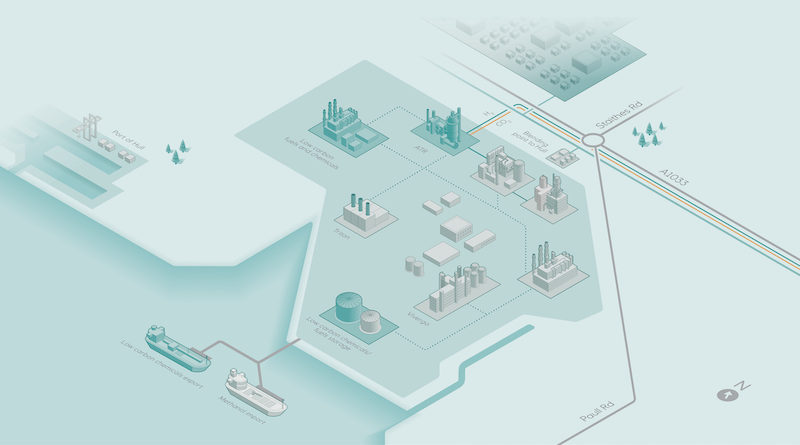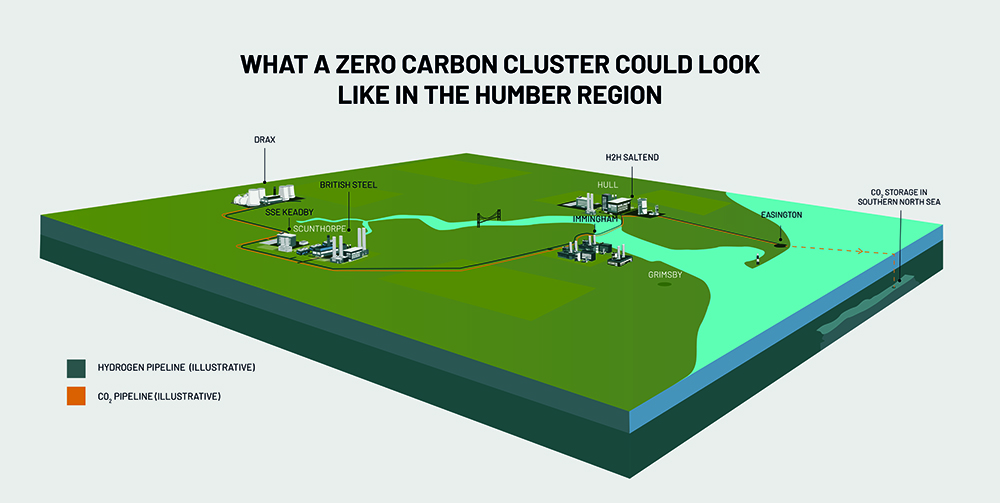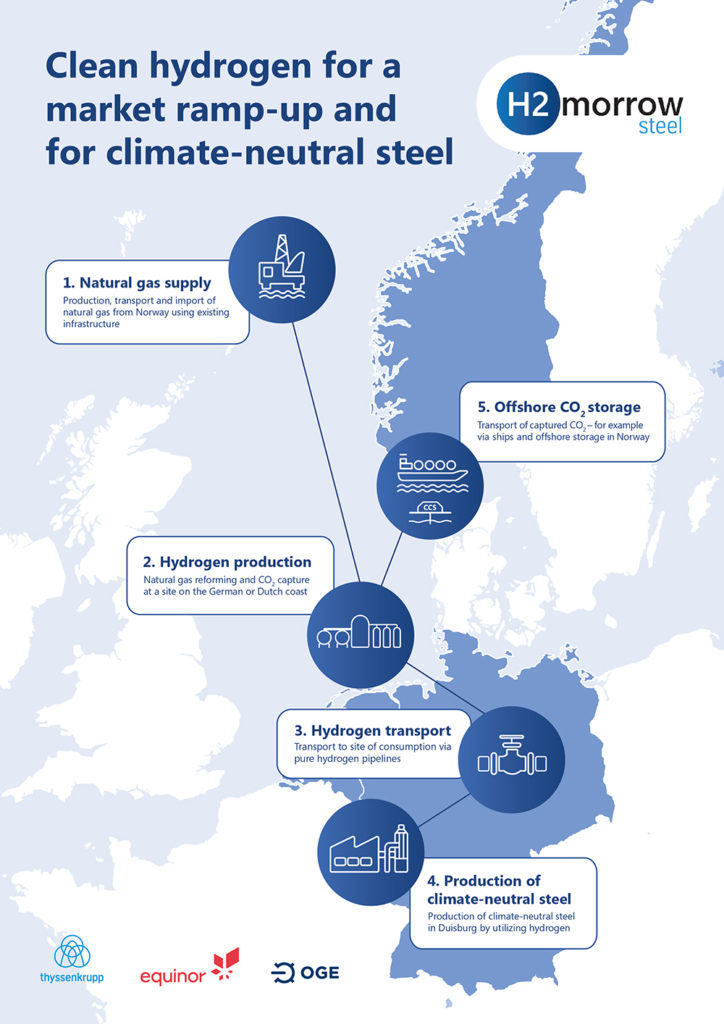
Towards greater hydrogen production capacity in Europe
As the EU works to implement the historical stimulus and recovery plan agreed last year, European leaders rightfully want to make sure success in delivering not just for today, but for a stronger, more resilient Europe in the future.
In the early days of the pandemic in 2020, many feared the freshly announced Green Deal would be stillborn, sacrificed on the altar of economic recovery at all costs. But bold choices were made: to look at the EU’s 2050 climate neutrality objective not as a constraint to the recovery, but as an opportunity and driver for a more prosperous and sustainable Union.
Molecules are back in the game
The recovery has now become an unequivocal commitment to the twin transitions: decarbonising our energy system and expand Europe’s digital backbone. At the same time, through analysis presented by the European Commission, the understanding of what it takes has evolved. Most policymakers now realize that an ‘all-electric’ mantra will not materialise due to technological and cost limitations. Molecules will continue to play an essential role in the transition and can do so without compromising on climate ambitions and hydrogen is likely to be central to such a future.
The European Commission’s Hydrogen Strategy offers us a glimpse of a possible direction of travel envisaged for the EU energy system, setting out ambitions and a legislative agenda for the years ahead.
Driven by the commendable willingness to succeed for the long term, it seems however that the Commission has put most of its eggs in one basket. With a strategy that seeks to design policy support and channel finance to specific, chosen technologies – in this case electrolysers using renewable electricity – doors are shut for options that can deliver low-carbon hydrogen in the near term and even negative-carbon hydrogen in the long term.
The strategy thus seems somewhat incomplete. In fact, to rely solely on molecules of renewable-based hydrogen would require more electricity generation than if the entire economy was to be ‘simply’ directly electrified. As one senior German government official recently remarked, “it took us 15 years to realise we couldn’t electrify everything, let’s not wait another 15 to realise we’ll need more than just renewable hydrogen”.
An inclusive approach to open up options
Truth is, the challenge to produce and deliver meaningful amounts of sustainable hydrogen to drive the decarbonisation of the European economy is not simply one of technology choices. It is also one of safeguarding and evolving a competitive internal energy market that delivers affordable energy options for consumers.
Indeed, a technology-inclusive regulatory framework, incentivizing GHG emission reductions, that works for producers and consumers alike, will be essential for European global competitiveness, economic prosperity and environmental resilience.
Rather than a technology-narrow strategy based on overly optimistic assumptions as a starting point, EU Member States are best served by a strategy leading them to deploy a mix of sustainable hydrogen manufacturing technologies.
This will better reflect their industrial and technological strengths and allow their industries to thrive in a competitive internal market for hydrogen and contribute to its deployment.
To help understand Europe’s hydrogen potential and inform future policy choices, IOGP and its Partners will in March this year publish the ‘Hydrogen for Europe’ study commissioned to Norwegian and French research centres SINTEF and IFPEN, with Deloitte as project manager. The study will highlight the technological and financial implications of various pathways, and inform policy makers about the types of projects likely required to scale up a hydrogen market and industrial hydrogen value chains in Europe.
Decarbonizing Heating
All the while the policy framework is still debated, industrial actors are already pursuing a wide range of hydrogen production projects across Europe. In the UK, around the city of Leeds, industrial actors have partnered in a regional and multi-sector effort, the “H21 Project”, to showcase how 3.7 million homes and 40,000 businesses, currently heated by natural gas, could become emission-free by 2034.
The pillar of this effort is combining 12.15 GW of natural gas-based hydrogen production facilities with CCS and make smart use of existing gas pipelines and some new build to transport hydrogen and CO2. In six further phases, it is envisaged to convert, by 2050, 12 million more homes across the rest of the UK alongside other sectors to hydrogen sourced from multiple technologies and lowering GHG emissions with 0.25 GtCO2 equivalent per year.

H2H Saltend, UK
Cancelling industrial emissions
Based on this vision, several at-scale decarbonisation projects promising to kick start decarbonisation of industry and power, are now being pursued in this region of the UK1. One such example is the “H2H Saltend” project2 (Fig. 1) with at its core a natural gas-based hydrogen project at Saltend Chemicals Park near the city of Hull. The planned 600 MW autothermal reformer plant to convert natural gas to hydrogen and fitted with CCS would be the largest of its kind in the world. From first production, H2H Saltend will reduce industrial CO2emissions by nearly 900,000 tonnes per year.
In a second step, hydrogen and CO2 pipeline infrastructure will be extended further to other industrial sites in the Humber region, enabling them in turn to fuel switch to hydrogen or capture their emissions. These sites include Drax Power station3, SSE Thermal’s Keadby site, Uniper’s Killingholme site and British Steel at Scunthorpe.
Through smart use of a variety of technologies and network design the region could come to host a large-scale sustainable hydrogen demonstrator by the mid-2020s; integrating carbon negative power from bioenergy carbon capture and storage (BECCS) and demonstrate the role of hydrogen in cleaning steel production.
In the process, not only will the region’s 55.000 workplaces in manufacturing continue to thrive, but a significant contribution will also be made to create an estimated 43,000 new job opportunities that a switch to hydrogen in energy-intensive industrial sectors across the UK could bring. Combined, the regional projects now pursued in the North of England/Humber region would allow for the decarbonisation of nearly 50% of the UK’s industrial emissions!
Clean Steel
Similar industrial scale project of manufacturing of sustainable hydrogen is ongoing in the EU. In the border region of the Netherlands and Germany, the “H2morrow” project partners are maturing a suitable concept for the generation and transport of natural gas-based hydrogen combined with CCS to the largest German steelworks in Duisburg.
The concept involves transport of natural gas from Norway via the existing transport network to an autothermal reforming plant (ATR) fitted with CCS on the German or Dutch North Sea coast. The ATR plant would have a hydrogen reforming capacity of up to 800,000 Nm³/h (2.7 GW), of which 600,000 Nm³/h of hydrogen (2.1 GW) for Thyssenkrupp Steel Europe and 200,000 Nm³/h to be provided to third parties.
The CO2 captured at the ATR plant is planned to be transported, either by ships or pipelines, to safe CO2 storage at sites such as the Northern Lights4 project in Norway or other storage options, e.g. the Porthos project5 offshore of Rotterdam.
The “H2morrow” steel project would allow for 7 million metric tonnes of climate neutral steel per year. Moreover, it would singularly enable up to 11 million tons of CO2 savings annually corresponding to close to 20% of German steel industry’s total CO2 emissions and more than 5% of total German industrial emissions!

Synergy is how we win
These projects, alongside the large size natural gas and CCS-based “H-vision” project6 and Europe’s largest renewables-only hydrogen production project, the “NorthH2“ project, both planned in the Netherlands, are testimony to the prowess and ingenuity of European industry in creating symbiotic hydrogen-based decarbonisation clusters across sectors, technologies and borders, while preserving and creating industrial jobs.
European leaders must encourage the deployment of many more such projects by encouraging collaboration and partnering – which also mitigate risks related to infrastructure investments – rather than pushing technologies by ideology or decree. Not only will they deliver substantial emission reductions, they will also secure Europe’s economic resilience and growth.
A Europe that successfully leads large scale industrial decarbonisation will inspire global partners and accelerate emission reductions beyond its own borders. Implementing the Hydrogen Strategy through technology inclusive rather than narrow legislation is an important first step in that regard.
2- https://www.zerocarbonhumber.co.uk/wp-content/uploads/2020/07/equinor-H2H-saltend-brochure-2020.pdf
4- https://northernlightsccs.com/en/about
5- https://www.porthosco2.nl/en/





